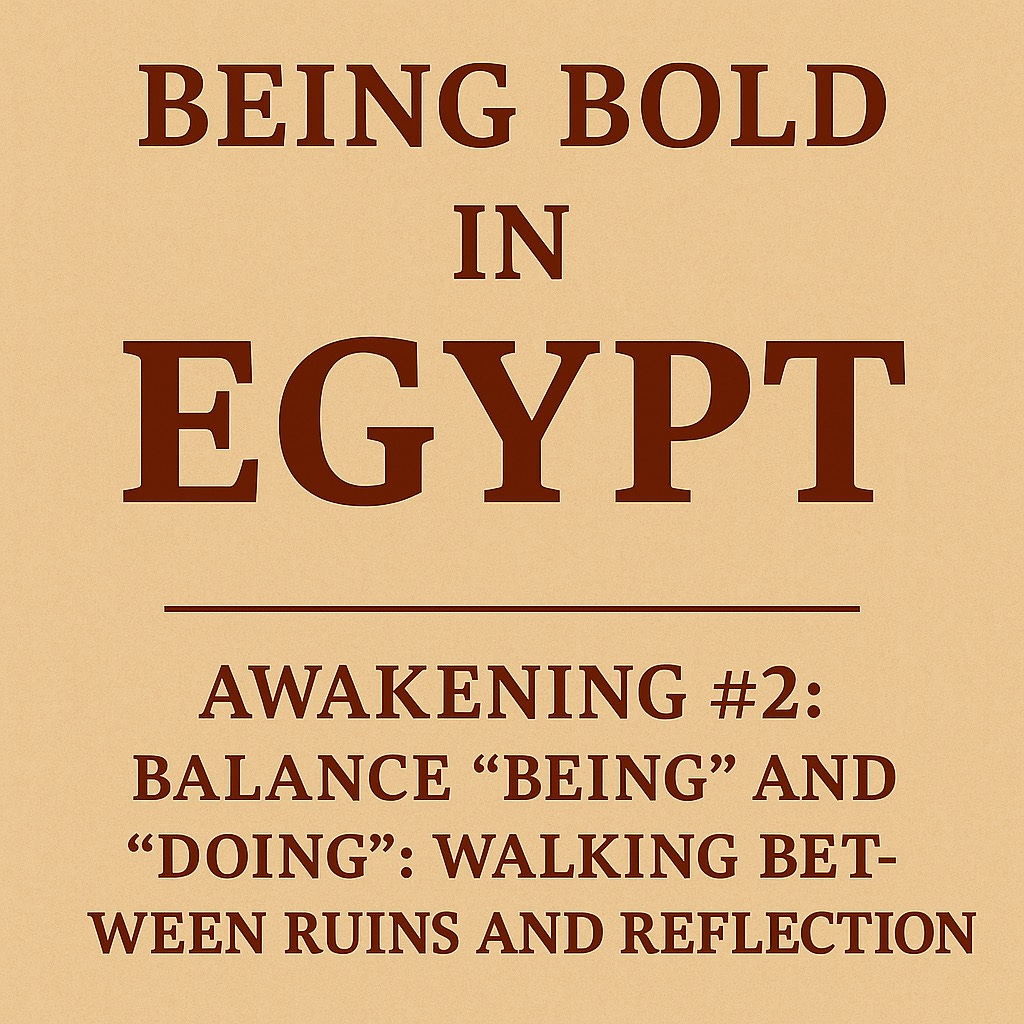Being Bold in Egypt: Awakening 2
Balance "Being" and "Doing": Walking Between Ruins and Reflection
Dear Koffeemocha friends,
In my first awakening, I wrote about Egypt not as a destination, but as a bold beginning — an encore to life, where renewal comes not through ease, but through meaning.
It’s easy to believe that life is measured by how much we earn. How far we travel. How many monuments we visit. How many stories we collect.
But sometimes — especially in Egypt — I was reminded that the most meaningful moments happen when we stop doing, and start being.
Too Much Motion, Too Little Presence
Our Egypt itinerary was full: Cairo, Ismailia, Aswan, Abu Simbel, Kom Ombo, Edfu, Luxor. Each destination came with layers of stories, histories, and mythologies. Each temple with its own gods, alignments, and legacy.
But with that richness came a challenge — we were always moving.
Wake up at 4 a.m., meet our guide in the lobby or on the deck, and board our shuttle or flight. Then, climb the steps, pose for a picture, listen to the story, and move on.
Repeat. Repeat. Repeat.
On paper, I was “doing” everything.
But inside, I began to feel I was missing something.
Ruins Don’t Shout. They Whisper.
Everything changed when we reached the Karnak Temple.
The sun was high. The air was dry. My body was tired.
But something in the stillness of those towering pillars, those shadows that have stood for 3,000 years, asked me to pause.
Not just physically — but spiritually.
I stopped moving. I stopped talking. I stopped performing.
And in that moment of quiet, I finally heard it:
… the silence of time.
It was in the cracked stone.
It was in the unfinished carvings.
It was in the absence of urgency.
The ruins didn’t shout. They whispered …
And only in being still could I listen.
“Being” is Not the Opposite of “Doing”. It’s What Makes It Matter.
Modern life rewards motion.
We’re all taught to do more, move faster, produce constantly.
But what ancient Egyptian taught me is this:
“Doing” may help you go further. But only “being” will help you arrive.
Standing in the Valley of the Kings, I didn’t need another fact or photograph.
I needed to feel the stillness that surrounded these tombs of Pharaohs.
To breathe in the desert silence.
To notice my heartbeat as I looked into chambers where history slept.
That’s when I realized:
We can walk all day long, but still never arrive.
We can listen to a hundred lectures, but still not learn.
We can visit every site, but never truly connect —
Unless we balance the pace of our body with the presence of our soul.
Back in New York, I Still Carry That Rhythm
Now that I’m back in the city, the contrast is sharp.
New York is the opposite of still. It moves, buzzes, demands.
And yet, I carry something different inside me.
… a rhythm … a reminder
to pause before responding,
to reflect before reacting,
to observe before interpreting.
This balance between doing and being isn’t just for the ancient Egyptian.
It applies to everything: parenting, mentoring, writing, and even walking the streets of Manhattan.
What I Learned, and What I Hope You Remember
A temple isn’t meant to be rushed. Neither is your life.
Stillness is not laziness — it is presence.
Not all value comes from what we produce. Some comes from what we receive.
Being bold doesn’t mean constant action. It means knowing when to pause and reflect.
My Invitation to You
If you are in a season of motion — career shifts, life transitions, family challenges —
may I invite you to find your own Karnak (Koffeemocha) moment?
Stand still.
Let the silence of your surroundings speak.
Not to tell you what to do — but to remind you who you are.
Boldness isn’t speed. Boldness is knowing what matters — and giving it your full attention.
Until Awakening #3,
Stay bold. Stay still.
With gratitude,
Kefei


